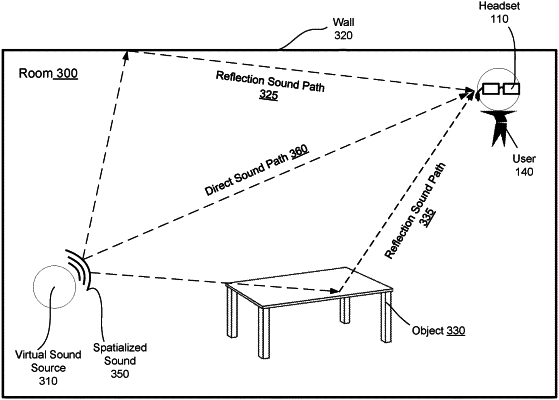| CPC H04S 7/304 (2013.01) [H04R 5/033 (2013.01); H04R 5/04 (2013.01); H04S 3/008 (2013.01); H04S 2400/01 (2013.01)] | 20 Claims |

|
1. A method comprising:
initializing a value of a first material acoustic parameter of each of a plurality of surfaces in a local area based on a model of the local area;
performing a simulation that calculates a value of a second material acoustic parameter based on the initialized value of the first material acoustic parameter of each of the plurality of surfaces, the simulation modifying the value of the first material acoustic parameter of each of the plurality of surfaces to a modified value of the first material acoustic parameter until a simulated value of the second material acoustic parameter calculated using the modified value of the first material acoustic parameter is within a threshold value of a target value of the second material acoustic parameter, the simulation comprising a sequence of iterations, wherein each iteration in the sequence comprises:
performing an acoustic probe based on a sound source and a sound listener that are coincident at a particular probe location within the local area,
detecting the target value of the second material acoustic parameter based on the acoustic probe, and
modifying the value of the first material acoustic parameter of a surface of the plurality of surfaces by a predetermined increment based on both the detected target value of the second material acoustic parameter and the calculated value of the second material acoustic parameter; and
updating the model based on the modified value of the first material acoustic parameter of each of the plurality of surfaces that causes the simulated value of the second material acoustic parameter to be within the threshold value of the target value of the second material acoustic parameter, wherein the updated model is used to render audio content presented by a headset.
|